Parts and consumables:
- Cloth gloves (optional)
- Funnel (as needed)
- rags
- Brake fluid Mitsubishi DIA QUEEN BRAKE FLUID SUPER 4 (DOT4) - MZ101244
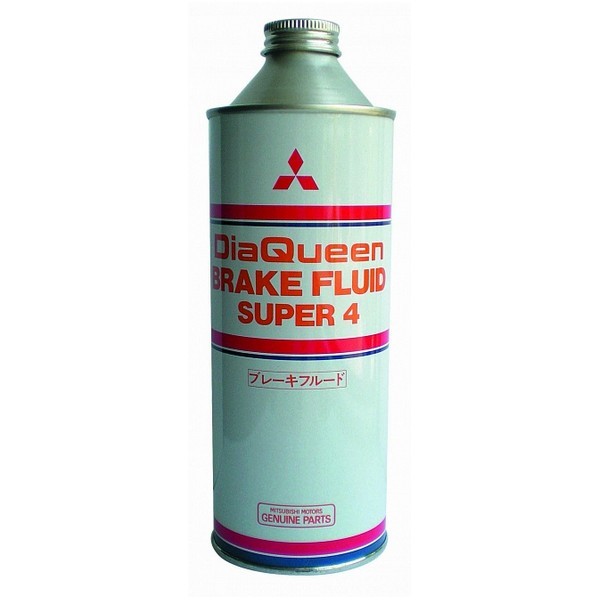
Notes:
For the brake system and hydraulic clutch drive, a common Mitsubishi ASX reservoir is used .
The liquid level is measured by a float switch. If the brake fluid level drops below the MIN mark, the brake fluid level warning light comes on.
The brake fluid level is checked periodically during the operation of the vehicle, at each maintenance, after bleeding the hydraulic drive of the brake system and if the brake fluid has been replaced.
Only use fluids recommended by the vehicle manufacturer that meet DOT3 or DOT4 requirements.
Do not reuse fluid drained from the brake system.
1. Park the vehicle on level ground, allow the engine to cool, and open the hood. The brake fluid reservoir is mounted on the master brake cylinder on the left side of the engine compartment near the bulkhead.
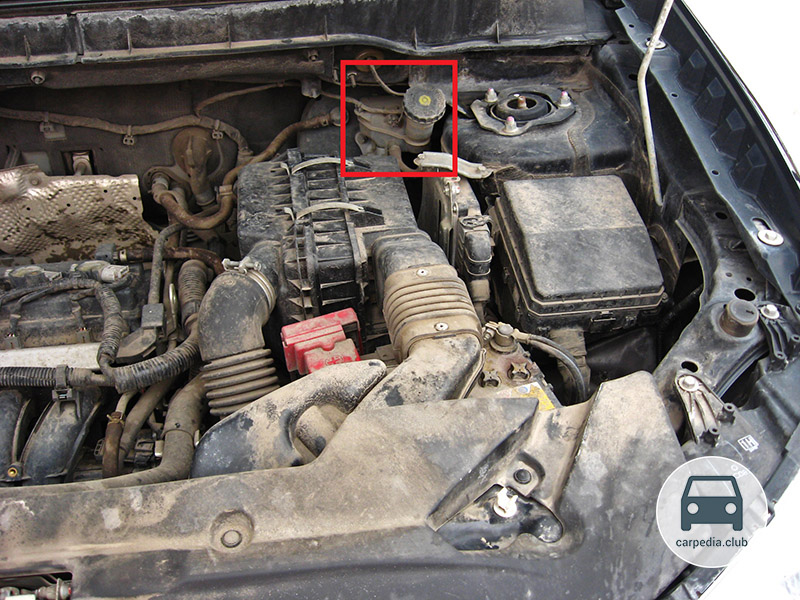
2. Visually check the Mitsubishi ASX brake fluid level in the reservoir. It must be between the MAX (maximum) and MIN (minimum) marks on the expansion tank.
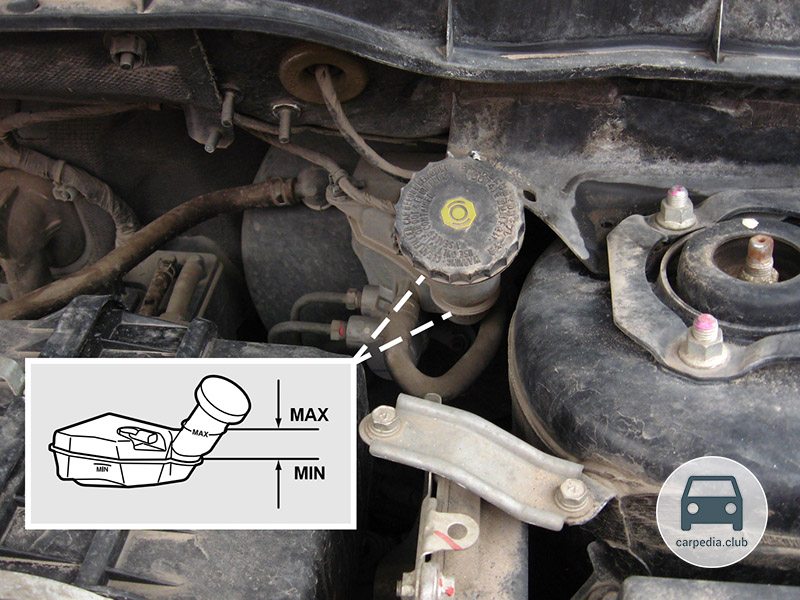
Warning:
Do not allow the liquid level to drop below the MIN mark.
3. If the brake fluid level is below the MIN mark, turn it counterclockwise and remove the cap from the reservoir neck.
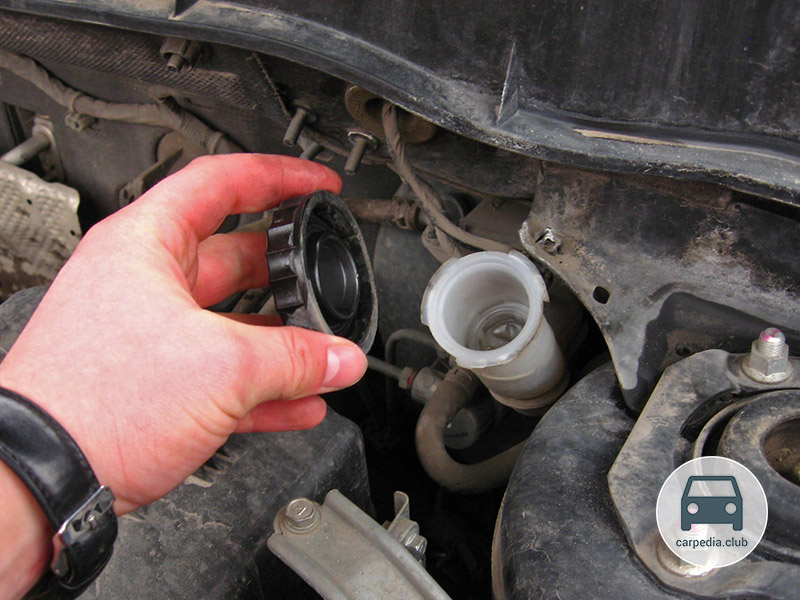
Useful advice:
Before opening the tank cap, wipe it off, and close it tightly when service is complete.
4. Add brake fluid up to the MAX mark.
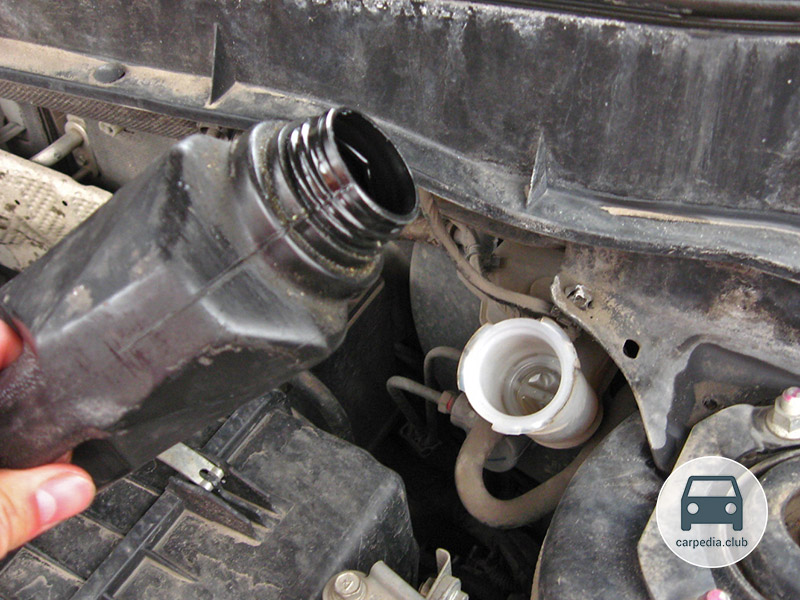
Notes:
You can use a funnel to avoid spilling the liquid.
If the Mitsubishi ASX brake fluid gets on wires, plastic or painted body parts during the topping up process, this can lead to damage. Therefore, when topping up, always put rags or napkins under. If liquid comes into contact with these parts, wipe them off immediately with a clean cloth.
5. Screw back the tank neck cap by turning it clockwise until it stops. Wipe up spilled liquid with a clean rag.
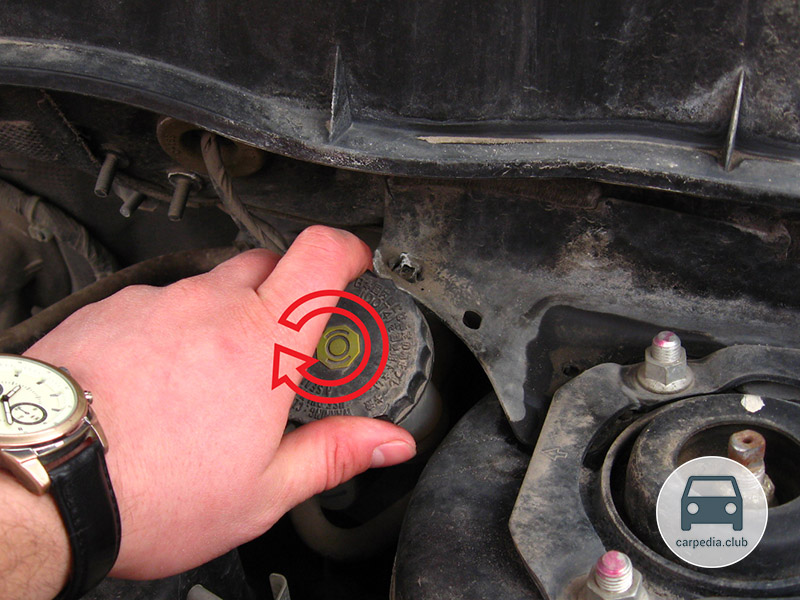
Notes:
A gradual drop in the brake fluid level with no leaks most likely indicates the need to replace the brake pads. Check the condition of the brake pads. Untimely replacement of pads leads to costly repairs (replacement of brake discs and calipers).
Pay special attention to the condition of the clutch master and slave cylinders. They can also cause a decrease in the level of brake fluid in the reservoir.
Pay attention to the color of the liquid. Fresh Mitsubishi ASX brake fluid has a clear yellowish tint. Brake fluid darkens with use as impurities accumulate in it. When the liquid darkens to brown or black, one refill is not enough. Drain the old brake fluid and replace with new. This is a clear sign that it is time to flush the hydraulic brake system and add the correct amount of new fluid.
The brake fluid used in the hydraulic brake system is poisonous, so if it comes into contact with the skin, immediately wash the area with plenty of water. If the liquid accidentally gets into the eyes or inside the body, you should immediately consult a doctor.
Some fluids tend to be highly flammable and can ignite even from contact with hot vehicle components.
Brake fluid must not come into contact with mineral oils. Even a small amount of mineral oil damages the brake fluid and brake system.
Brake fluid is hygroscopic. With a high moisture content in the brake fluid, the effectiveness of the brake system decreases.
The article is missing:
- Photo of parts and consumables
Source: carpedia.club
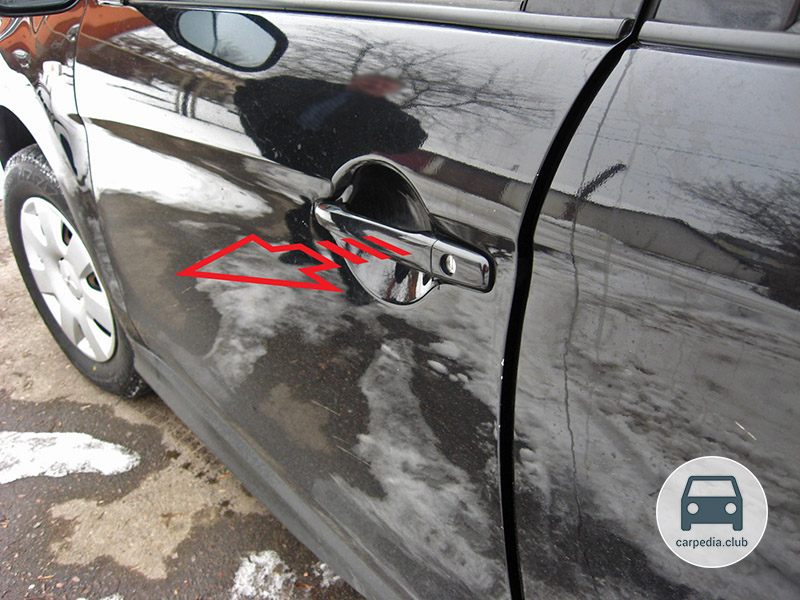
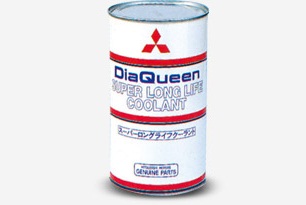
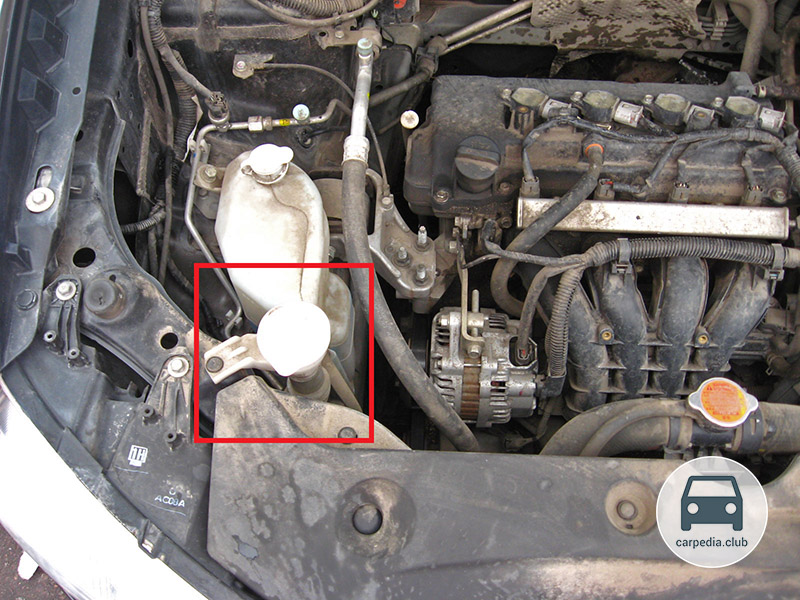
![1 generation [restyling] [2012 - 2016]](/uploads/4abc6123.png)
